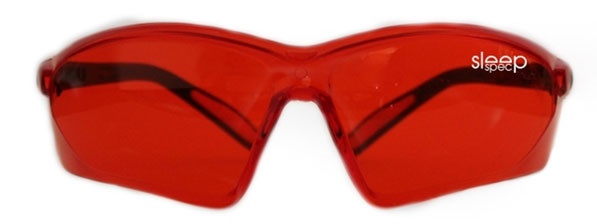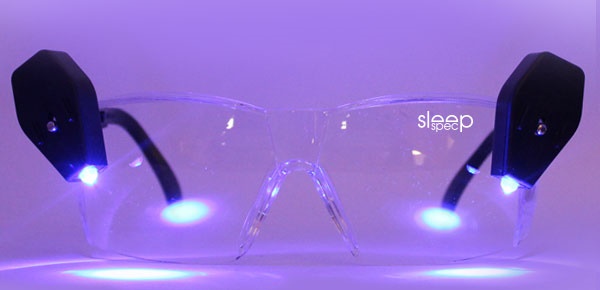
The South African Society of Sleep Medicine estimates that about 30 to 40 percent of adults indicate some level of insomnia within any given year, and about 10 percent to 15 percent indicate that the insomnia is chronic and/or severe.
People struggle to both get to sleep and stay asleep and new research has revealed that much of this is to due to the increased presence of blue light in our environment – from cellphones, tablets, iPads, televisions to gaming consoles – even LED and fluorescent lights.
Why is blue light a problem?
The problem with blue light is that it suppresses the production of melatonin (the sleep hormone), so people are just not able to switch off and get to sleep.
The blue light emitted from these devices is essentially telling the brain to wake up when it should be going to sleep – so the body’s natural circadian rhythm is being disrupted.
Since we're unlikely to stop watching television or use our phones, it's clear that the effects of using these devices is quite dramatic.
South African Specialist Ophthalmologist Dr Rob Daniel has designed a non-invasive, non-medicated way of dealing with the problem called SleepSpec.
These glasses have special orange lenses which eliminate blue light. Worn for two hours before bedtime, they allow melatonin to be produced with the result that the body is able to prepare for sleep. This means you can carry on Facebooking and watching the Telly but it will not affect your sleep pattern.
According to Dr Daniel the impact of lack of sleep and poor sleep patterns simply cannot be overlooked as studies are now revealing a link between sleep difficulties and the increase in mental illnesses such as Dementia, Alzheimer's & Parkinson's.
It is also thought that the SleepSpec could help children with ADHD as poor sleep contributes to lack of concentration and performance both in the classroom and the workplace and of course children are significant users of technology nowadays.
Image: The SleepSpecs close up
HEALTH24'S Q&A WITH DR DANIEL
What made you think of designing these specs to block out blue light?
In my work as an ophthalmologist, I am constantly reading and hearing about new scientific research and discoveries and there has been an increasing amount of research and literature referring to the effect of excessive light in our environment and its effect on melatonin levels and so I realised that there was a need to counteract the effects of excess light in our environment.
I also became aware of how many of my patients were experiencing sleep difficulties.
Is there any point in wearing them at other times of the day?
The natural 24hr rhythm of the body (circadian rhythm) is timed by the presence of blue light in sunlight. Human beings are diurnal animals (day-time waking) and therefore melatonin is produced after the sun has set.
Artificial light includes blue light which turns the melatonin production off.
By blocking blue light 2hrs before we sleep we can increase natural melatonin production and thereby achieve better quality sleep when we go to bed.
Wearing the SleepSpec glasses during the day will signal to the brain that the time for sleeping is near, and start melatonin production.
Similarly, by wearing the Blue Light Simulator during the day in environments with low blue light (during short days in the Northern hemisphere melatonin production is completely held off, thereby allowing the brain to remain awake). The Blue Light Simulator emits blue light directly onto your retina to wake you up. They need to be worn for the allocated time only, to ensure that your sleep for that evening is not affected.
Image: The Blue Light Simulator
What are they made of/how do they actually block out blue light? Ie, what’s different or unique about the orange glasses and why orange and not red or green, for instance?
It is important for people to understand that these are not just coloured lenses. They are scientifically developed lenses. Blue light is part of the visible spectrum and the glasses were designed to block any wavelengths <500nm (all blue light).
The chemical composition of the glasses is specifically designed to do this, and is what gives the lenses their orange colour.
How much do the specs cost and where can you get them?
SleepSpec cost from R690 for the standard SleepSpec shades to R995 for a starter pack which contains a pair of SleepSpec shades and a SleepSpec Spotlight (similar to a torch, it's used when you wake up in the middle of the night so you don't come into contact with any blue light). There are also SleepSpec shades for children which cost R670.
Can you wear them over contact lenses?
Yes, you can wear SleepSpec shades with contact lenses.
How comfortable are they to wear over prescription glasses?
SleepSpec Shades have an option with an optical insert which can be made with your lens prescription so that there is no need to wear them over prescription glasses. The inserts can be made by any optometrist.
Watch: Dr Daniel explains SleepSpec
Read more:




 Publications
Publications
 Partners
Partners













